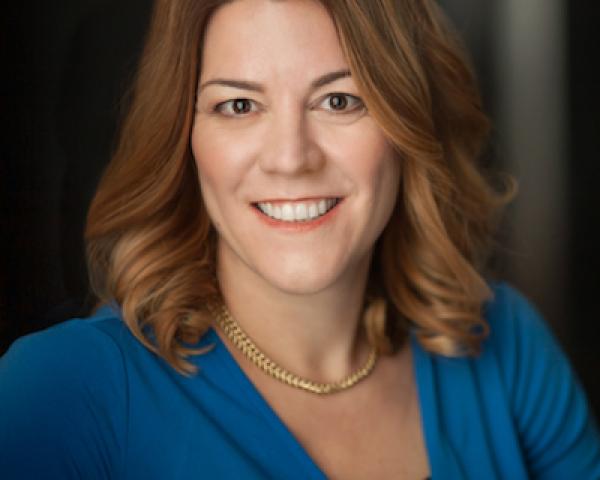When technology is baked into a device, we rarely give it much thought. We buy a smartphone for its utility – not its operating system. Sometimes a new technology dramatically changes how everyone does things; the internet is a good example. Some plausibly great innovations, such as 3D television, just never gain traction. Which of these outcomes will blockchain have?
Recently, blockchain has emerged as a technology that will potentially transform industries in a way similar to what the Internet did a couple of decades ago. Still a nascent technology, its many uses have not yet been discovered or explored.
Most people know a little about blockchain:
-
- It lets multiple parties agree on a common record of data and control who has access to it.
- Its platform makes cryptocurrencies like bitcoin possible.
- Movement of cryptocurrency verified by blockchain allows peer-to-peer cash transfers without involving banks.
- Blockchain is a permanent, auditable record, so any tampering with it is obvious.
Some people think blockchain will transform security in financial services and fundamentally reshape how we deal with and trust complex transactions, though this could be a response to hype or a fear of missing out. Many other people ask why and how they should use blockchain.
On the face of it, using a shared (or distributed) ledger to process multiple transactions doesn’t seem so revolutionary. Blockchain is essentially a recordkeeping system. Perhaps its association with cryptocurrency – such as bitcoin – lends it a darker, more enigmatic edge than the software traditionally used for processing multiple transactions. One way or another, insurers face pressure to update antique systems with new ones that can compete with the demands of a digital world, and that means incorporating blockchain technology.
A distributed ledger of transactions
A blockchain can be seen as an ever-growing list of data records, or blocks, that can be easily verified because each block is linked to the previous one, forming a chain. This chain of transactions is stored on a network of computers. For a record to be added to the chain, it typically needs to be validated by a majority of the computers in the network. Importantly, no single entity runs the network or stores the data. Blockchain technology may be used in any form of asset registry, inventory and exchange. This includes transactions of finance, money, physical property and intangible assets, including health information.
Because blockchain networks consist of thousands of computers, they make any effort to add invalid records extremely difficult. Every transaction is secured using a random cryptographic hash, a digital fingerprint that prevents its being misused. Every participant has a complete history of the transactions, helping reduce the chance of transactions being corrupted. Simply put, a blockchain is a resilient, tamper-proof and decentralized store of transactions.
Complex processing and automation with smart contracts
Blockchain ecosystems enable a large number of organizations to join as peers to offer services, data or transactions that serve specific customers or complex transaction workflows transparently. These ecosystems can automatically process and settle transactions via smart contracts that encapsulate the logic for the terms and triggers that enable a transaction.
Smart contracts are created on the blockchain and are immutably recorded on the network to execute transactions based on the software-encoded logic. Transparency through workflows recorded on the blockchain facilitate auditing. Peers and partners within a blockchain ecosystem independently control their business models and the economics without the need to use intermediaries.
Self-executing smart contracts can be used to automate insurance policies, with the potential to reduce friction and fraud at claim stage. A policy could be coded to pay when the conditions are undeniably reached and decentralized data feeds verify that the event has certainly occurred. The blockchain offers enhanced transparency and measurable risk to this scenario.
Parametric insurance, which operates through smart contracts with triggers that are based on measurable events, can facilitate immediate payments while decreasing the administrative efforts and time. Effectively, the decision to pay a claim is taken out of the insurer’s hands. Other possible models are completely technology-based without the need for an actual insurance company. The decentralized blockchain model lends itself well to crowd-sourced types of insurance where premiums and claims are managed with smart contracts.
See also: Blockchain’s Future in Insurance
Blockchain-based insurance
New insurers using blockchain are emerging and offering increased transparency and faster claims resolution. Here are some examples:
-
- Peer-to-peer property and casualty insurer Lemonade uses an algorithm to pay claims when conditions in blockchain-based smart contracts are met.
- Start-up Teambrella also leverages blockchain in a peer-to-peer concept that allows insured members to vote on claims and then settles amounts with bitcoin.
- Dynamis provides unemployment insurance on a blockchain-based smart contract platform.
- Travel delay insurer insurETH automatically pays claims when delays are detected and verified in a blockchain data ledger.
- Etherisc is another new company building decentralized insurance applications on blockchain that can pay valid claims autonomously.
Traditional insurance companies, such as AXA and Generali, have also begun to invest in blockchain applications. Allianz has announced the successful pilot of a blockchain-based smart contract solution to simplify annual renewals, premium payments and claims submission and settlement.
Blockchain has the potential to improve premium, claim and policy processing among multiple parties. For example, in the last year the consultancy EY and data security firm Guardtime announced a blockchain platform to transact marine insurance. This platform pulls together the numerous transactional actions required within a highly complex global trade made up of shipping companies, brokers, insurers and other suppliers.
A consortium of insurers and reinsurers, the Blockchain Insurance Industry Initiative (B3i), has piloted distributed ledger technology to develop standards and procedures for risk transfer that are cross-market compatible. Whether or not the outcome is adopted industry-wide, it seems important for digital solutions to be created with this transparency and inclusiveness in mind.
There is clear potential for blockchain in reinsurance where large amounts of data are moved between reinsurers, brokers and clients, requiring multiple data entry and individual reconciliation. Evaluating alternative ways of conducting business is one reason for the collaboration of Gen Re with iXledger, which can explore ideas while remaining independent.
Handling of medical data and other private or sensitive information
Individuals will generate increasing amounts of personal data, actively and passively, from using phones and Internet of Things (IoT) devices, and processing digital healthcare solutions. Increasingly, consumers will want control of this scattered mass of digital data and share it with whomever they choose in exchange for services. This move aligns perfectly with the concept of a “personal data economy.” Think of information as currency and think about using blockchain to secure private data and reveal it in a secure and trusted manner to selected parties, in exchange for something.
Electronic health records are now common. Several countries use blockchain to secure patient data held digitally. This helps counter legitimate concerns about how sensitive personal data can be kept secure from theft or cyber-attack. Code representing each digital entry to the patient record is added to the blockchain, validated and time-stamped. A consortium of insurers in India is using blockchain to cut the costs of medical tests and evaluations, and to ensure the data collected is kept secure, along with other benefits including identification of potential claims fraud.
Looking to leverage the data economy, companies may employ innovative insurance propositions to engage people. Because the propositions will rely on shared data, people may be put off, fearing a loss of control over their personal information. While this fear poses a huge challenge for an industry seeking to improve its reputation for trust, blockchain technology may help insurers to reassure customers the digital data they share with them is safe.
Verification of documents
Verification of the existence and purpose documents in banks and insurance companies relies on storage, retrieval and access to data. A blockchain simplifies this process with its open ledger, cryptographic hash keys and date-stamped transactions. Actual hard copies of documents are not stored; instead, the hash represents the exact content in a form of scrambled letters and numbers. A change in a document will be exposed because it will not match the encoded one. The effect is an immutability that proves the status of the data at an exact moment and beyond doubt.
Blockchain technology is a “trustless” system because nobody has to trust anybody else for the system to function; the network of users acts together to vouch for the accuracy of the record. Examples of blockchain protecting patient records demonstrate its potential to implement other trusted and secure transactions with less bureaucracy.
There are other opportunities for insurers to move to a digitized paradigm and catalyze efficiency gains; blockchain need not be reserved for cross-industry platforms, and it’s not only useful in multiparty markets with high transaction volumes and significant levels of reconciliation; smaller-scale solutions can bring benefits, too.
Features that ensure privacy and data security
Beyond driving efficiencies, blockchain employs agreed standards for data care, which reduce the vulnerability of data that arises with the mass of sensitive data that digital connectivity creates. Other features that enhance privacy and data security include the contract process: Transactions are not directly associated with the individual, and personal information is not stored in a centralized database vulnerable to cyber-attack. Insurance companies, as well as technology companies, are accountable to their users for the security of their devices, services and software, and hackers are less likely to target enterprises with strong security.
Multiple participants and the removal of a central authority
Transparency, audit-ability and speed are standard requirements for any organization to successfully compete and transact in an increasingly complex global economy. Data is a valuable catalyst to that process and is complemented by blockchain’s ability to organize, access and transact efficiently and compliantly.
Trusted transactions require access to valuable data, and blockchain facilitates efficient access across multiple organizations. The economics for data usage will drive new business models fueled by micropayments, which will require efficiencies to scale. Business models based on data aggregation by third parties in centralized repositories with total control and limited transparency will be replaced by distributed blockchain-enabled data exchanges where data providers are peers within the ecosystem.
Decentralized peer organizations can use the blockchain for permission access, and for facilitating payments, to ensure total control of their economic models, without having a centralized authority. Data access and transactions are controlled directly by each member of the ecosystem, with complete transparency and immediate compensation.
Token economies
Ecosystems supporting peer organizations that transact or share data will require an effective mechanism for micropayments. These business models require efficiency, with less overhead than traditional account payable and account receivable workflows.
Event triggers, cryptlets that enable secure communication between blockchain, and external verification sources (oracles) will execute based on predetermined criteria, and token payments will be made simultaneously. Counterparty agreements may initially define the relationships between parties on the network, but payments are executed within the smart contract transactions.
See also: How Insurance and Blockchain Fit
The elimination of a time delay in payments acts as a stimulant for economies; tokens earned can immediately be spent, increasing the speed at which organizations will earn and spend. Traditional delays and fees that occur throughout accounting workflows and through intermediary banks that process payments can be eliminated.
Cross-border processing
Currently, global payments involving foreign exchange introduce complexities in addition to time delays. Economic indicators and political events dramatically affect the exchange rates and profitability of transactions. Cross-border payments require access to the required currencies by intermediary banks, which can cause additional delays beyond the internal accounting workflows.
With blockchain technology, using a token-enabled economic layer simplifies the payments to support micropayment efficiencies. Participants on the blockchain network will be able to efficiently use the preferred fiat currencies to acquire or sell tokens without using intermediaries, banks or currencies.
Merging blockchain and data
Today, there are more connected IoT devices than there are people on the planet, and the data generated is growing at an exponential rate. Various sources have predicted that the number of connected devices will grow to more than 70 billion by 2025; the numbers are almost irrelevant.
IoT devices are used in homes, transportation, communities, urban planning, environment, consumer packaged goods, services and soon in human bodies. A number of insurance companies use these devices to assess driver habits and usage. Autonomous cars and changing ownership and usage models are creating a generation of insurance products that can be facilitated through IoT-collected data. Home devices can detect leaks, theft and fire damage – capabilities that reduce risk. Shipping companies use the IoT for fuel and cargo management, which offers operating efficiencies, transparency and loss prevention.
Merging the mass of IoT data with the blockchain is not without challenges, but this combination can provide a completely new way of creating an insurance model that is far more efficient and faster, and where data flows directly from policyholders to the insurer.
Summary
Interest in the trinity of bitcoin, blockchain and distributed ledger technology has significant momentum. However, the technology is not magic or a panacea for every corporate woe. It has disadvantages and limitations, and there are situations where it would even be the wrong solution. There is enough about it, though, to merit continued closer investigation – the many emerging cases of its application bear testament to that – but in place of hype we still need answers.









